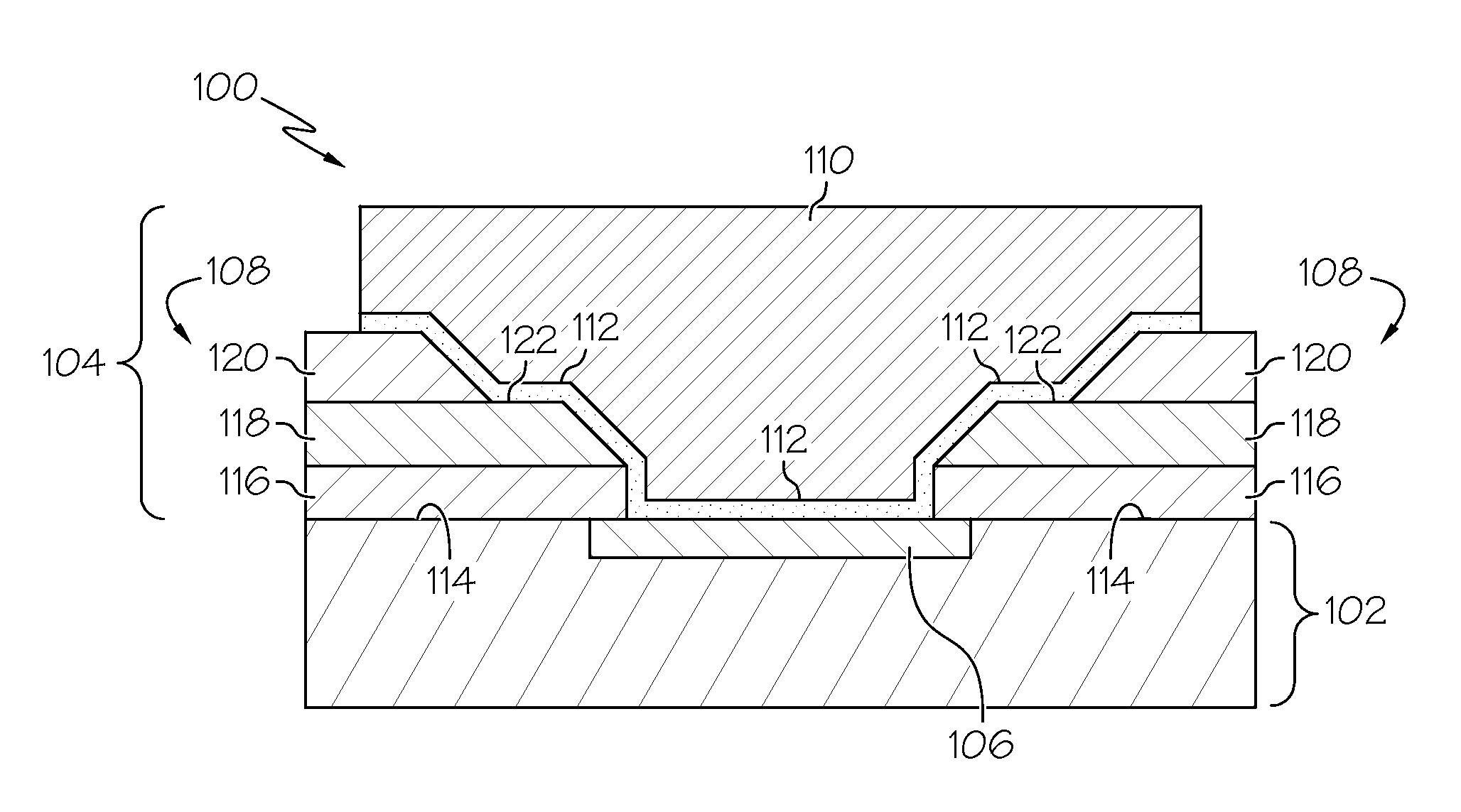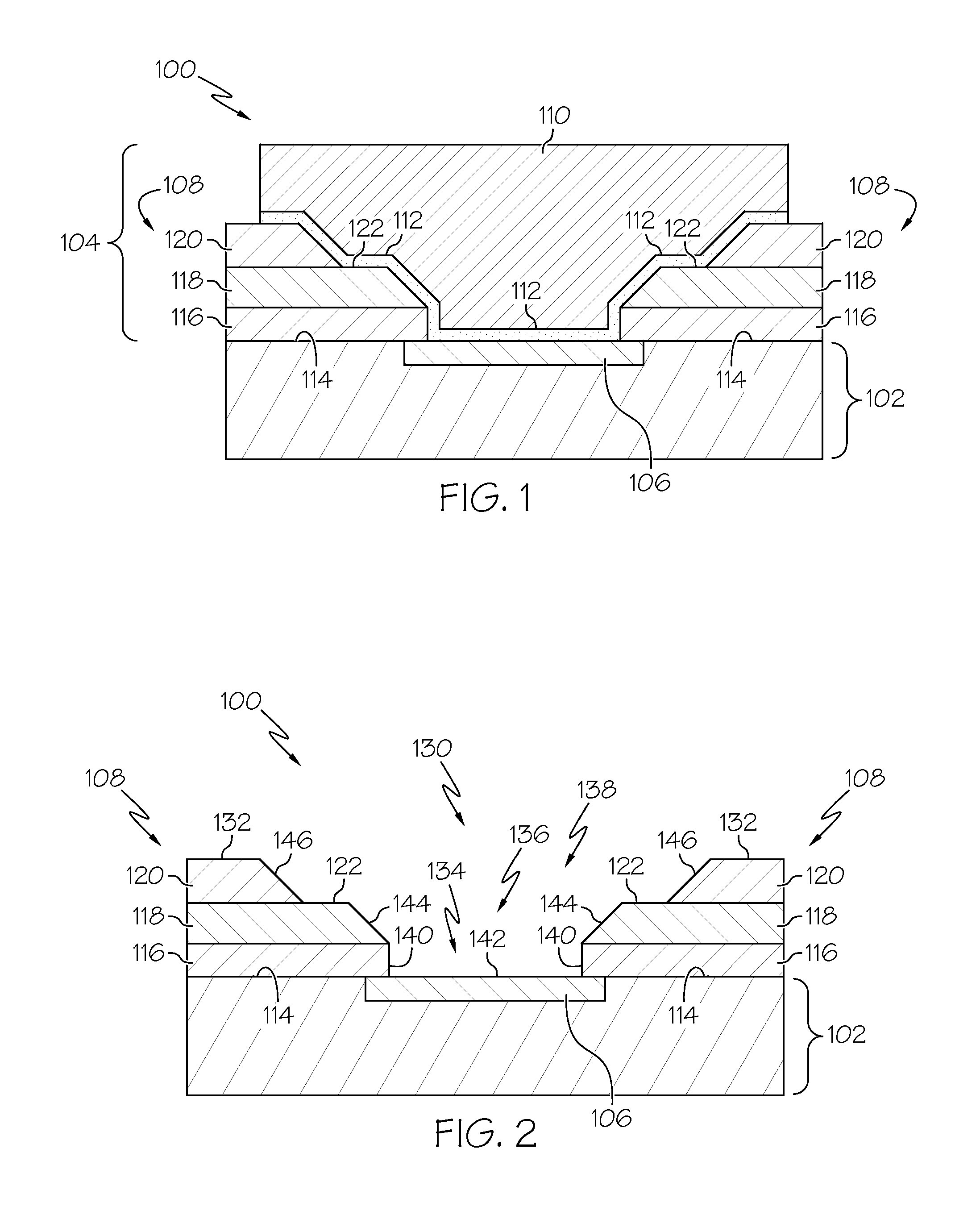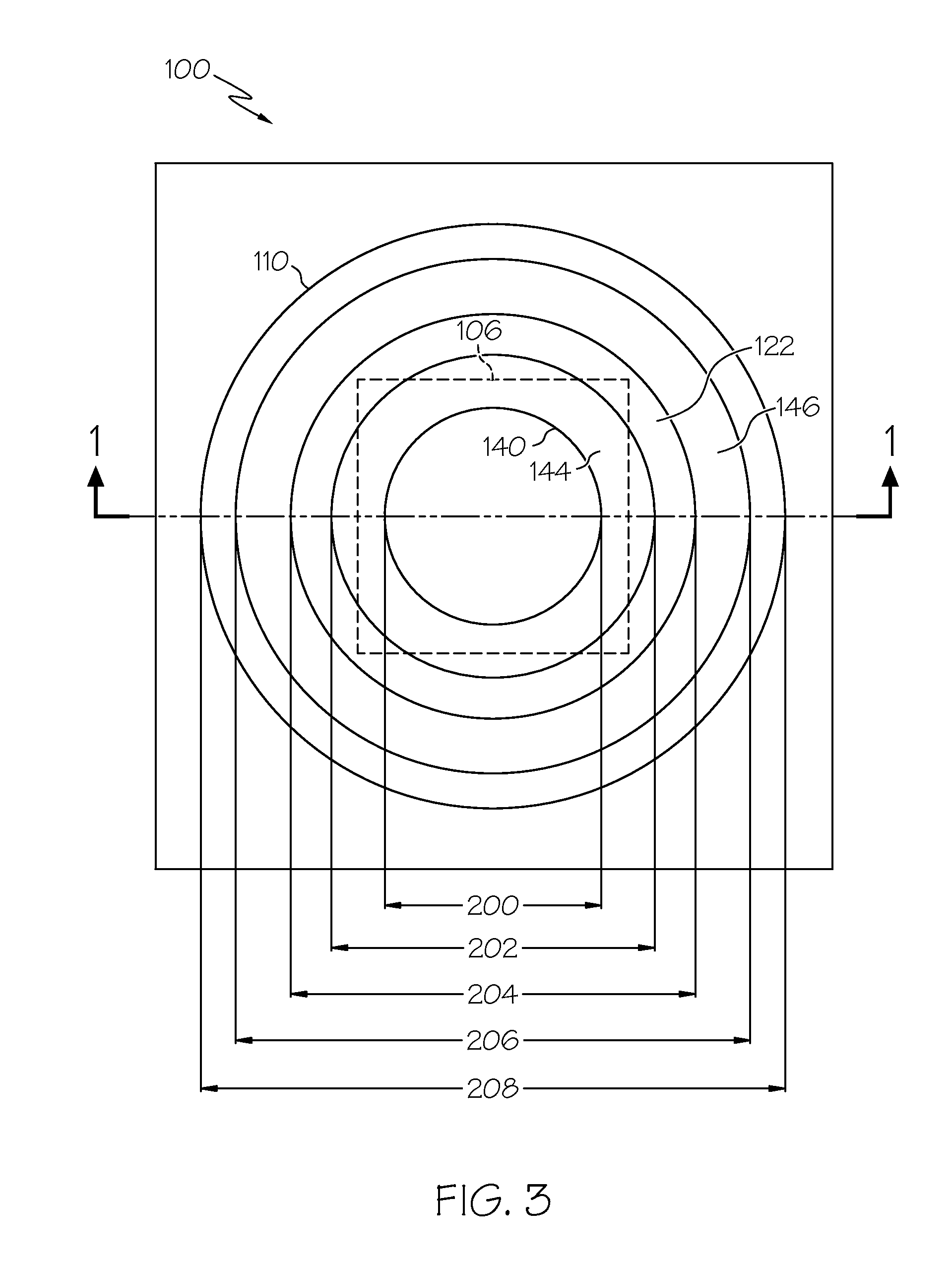Conductive connection structure with stress reduction arrangement for a semiconductor device, and related fabrication method
a technology of conductive connection structure and semiconductor device, which is applied in the direction of semiconductor devices, solid-state devices, basic electric elements, etc., can solve the problems of high stress, high stress, and high stress of low-k and ulk materials typically used in semiconductor device fabrication
- Summary
- Abstract
- Description
- Claims
- Application Information
AI Technical Summary
Benefits of technology
Problems solved by technology
Method used
Image
Examples
first embodiment
[0018]FIG. 1 is a cross-sectional view of an exemplary embodiment of a semiconductor device 100 that includes a semiconductor device structure 102 and a conductive connection structure 104 for the semiconductor device structure 102. Note that only a small portion of the semiconductor device 100 is shown in FIG. 1 (a realistic embodiment could include many conductive connection structures 104 arranged in an appropriate matrix or pattern). The semiconductor device structure 102 may be formed using conventional and well known semiconductor process technologies. In this regard, the semiconductor device structure 102 will typically include a support substrate, semiconductor material, dielectric material, and metal material in different layers (forming features such as transistors, conductive interconnects, isolation regions, conductive plugs, ILD, and the like). The semiconductor device structure 102 also includes a number of conductive contact pads that represent electrical connection p...
example
[0032]A preferred embodiment of the semiconductor device 100 may be fabricated with the following exemplary dimensions, which are not intended to be limiting of the disclosed subject matter in any way. This particular example corresponds to a solder bump that utilizes underbump metallization having a diameter of 105 μm. This diameter 208 is depicted in FIG. 3. For this 105 μm bump size, the lower stress buffer layer 118 and the upper stress buffer layer 120 are both 4 μm thick, and the passivation layer 116 is 900 nm thick. The sidewall slope defined in the lower stress buffer layer 118 is 40 degrees, and the sidewall slope defined in the upper stress buffer layer 120 is also 40 degrees.
[0033]For this example, the width of the square contact pad 106 is 5 μm, the diameter of the via 134 formed in the passivation layer 116 is 47 μm (reference number 200 in FIG. 3 corresponds to this dimension), the diameter at the top of the via 136 formed in the lower stress buffer layer 118 is 56 μm...
second embodiment
[0034]FIG. 4 is a cross-sectional view of another exemplary embodiment of a semiconductor device 400. A number of features and characteristics of the semiconductor device 400 are similar or identical to those described above for the semiconductor device 100 (for the sake of brevity, common features and characteristics will not be redundantly described here in the context of the semiconductor device 400). The semiconductor device 400 includes a semiconductor device structure 402 and a conductive connection structure 404 having a stress buffer arrangement 408 with a stepped profile. The conductive connection structure 404 includes a conductive connection element 410, underbump metallization 412, a passivation layer 416, a lower stress buffer layer 418, and an upper stress buffer layer 420.
[0035]The longitudinal cross-sectional profile of the stress buffer arrangement 408 includes a plurality of discrete steps (three vertical steps in this example). Notably, the stress buffer arrangeme...
PUM
 Login to View More
Login to View More Abstract
Description
Claims
Application Information
 Login to View More
Login to View More - R&D
- Intellectual Property
- Life Sciences
- Materials
- Tech Scout
- Unparalleled Data Quality
- Higher Quality Content
- 60% Fewer Hallucinations
Browse by: Latest US Patents, China's latest patents, Technical Efficacy Thesaurus, Application Domain, Technology Topic, Popular Technical Reports.
© 2025 PatSnap. All rights reserved.Legal|Privacy policy|Modern Slavery Act Transparency Statement|Sitemap|About US| Contact US: help@patsnap.com



